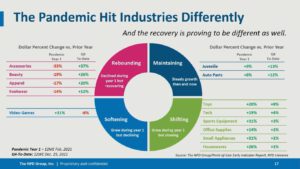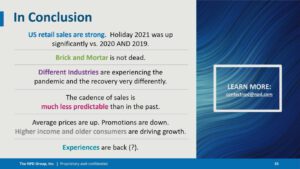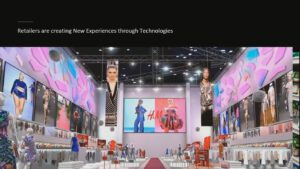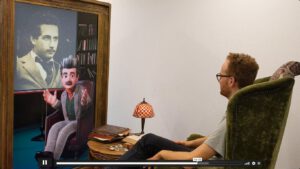CES took place in Las Vegas again this year, although in a diminished form due to recurring pandemic conditions. The trade show was broadcasted online in a parallel streaming event. Daily b-roll videos documented the activities on the trade floor. But everything taking place at the trade event pointed to somewhere else. For a number of reasons, CES became a reference hub directing to different levels of hybridity.
Of course, the pandemic was the main reason for shifting to more online and less local presentations. But the traditional trade show format was put into question before, as well as brick and mortar retail had been in crisis already before. In terms of hardware product displays, the shortage of microchips is only partly due to pandemic restrictions. The main reasons are increasing demand for digital consumption, while production and shipping bottlenecks prevail in times of deglobalization. And for digitization, upcoming virtual venue alternatives not only spur the demand for digital consumption. They tend to cannibalize on-site events and manage to alter corporate brand strategies.
The announcement of Sony’s PlayStation VR2 system made all these factors visible under a burning lens. The product was absent, only specs were given – confirming what was already leaked before in the digital realm. Release date and price information were not disclosed, as the system requires the PlayStation 5, which is in short supply since its release in 2020. Instead of becoming the star of the show in Las Vegas, Sony pointed to another time and space for later revelation, most probably at their proper digital promotion events.
Many presentations and panels on trendy topics either referred to other places than the ones they actually took place, or they conceived scenarios of spatial transformations, expanding actual spaces into other dimensions. The NFT driven art space migrates to social media trading places and shows up on the real stage with displays for digital art expositions. Retail stores and amusement parks enhance their local attraction value with projection mappings, while at the same time connecting this enhancement to digital promotion platforms. Big corporations set the stage for their clean energy product lines on the trade floor, while advertising their digital twin booths with energy consuming cryptocurrencies. Booming health tech builds on extensive biometric data tracking, while ignoring social cohesion. Quickly becoming America’s fiercest dilemma since the Manhattan Project, data regulation will not be spurred at a place that historically made a fortune with gambling organized by mobster gangs. But the abysmal contentions on this matter evoke prohibition initiatives elsewhere.
The applications of robots and AI characters in real world environments promote personalized consumer experience onsite, while they actually represent a personalization window of the digital shopping procedure itself. Window hopping seems to become the predominant attitude on the show floor now, just like in the screened tracks. Dissolving in digitization, CES took countermeasures in its electronic domain to gain back local relevance with additional showroom for outer space tech and autonomous driving demonstrations. The first one is a space without consumers, yet, and the second one relocates the consumer from the helm to the sideline.
Nevertheless, the Consumer Electronic Show maintains its relevant attraction. It is indispensable to get a hand on product innovations, no matter if they point to the floor they are standing on or to a distant Metaverse. This holds especially for immersive technologies, where haptics, micro-OLEDs and body tracking propel further emancipation of virtuality from traditional screen and media frameworks. But the actual display of hybrid events appears like a body sawed in two halves: while the legs on the floor do not lead directly to the products anymore, the upper bodies float around in limited virtual replacements. Pandemic conditions and supply shortages may pass by. But there will be fewer legs on the experiential level and more eyeballs in alternate spaces. Trading places will have to balance it out on the spot. Their displacement already has begun.











